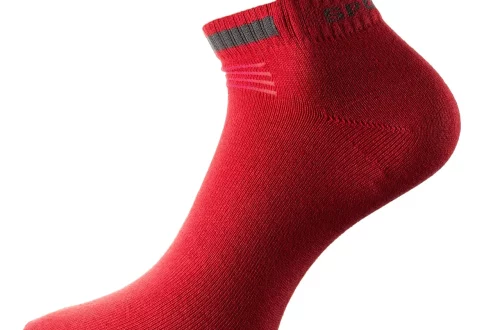
The Best Bones for Your Puppy: A Complete Guide to Chewing Safety
When it comes to raising a puppy, providing them with appropriate chew toys is crucial for their development and happiness. Chewing is a natural behavior for dogs, especially young ones, as it helps them explore their world, relieve teething discomfort, and keep their jaws strong. However, not all bones and chewable items are created equal, and choosing the right ones requires careful consideration.
Puppies are notorious for their enthusiastic chewing habits, and while this can lead to fun and engaging playtime, it can also pose risks if they are given the wrong types of bones. Some bones can splinter, break teeth, or even cause choking hazards. As a responsible pet owner, understanding the best options for your puppy is essential to keep them safe while allowing them to enjoy their chewing instincts. This guide aims to help you navigate the world of puppy bones, ensuring you make informed decisions that will benefit both you and your furry friend.
Understanding Your Puppy’s Chewing Needs
Every puppy is unique, and their chewing habits can vary significantly based on age, breed, and personality. Puppies typically go through a teething phase that starts around three weeks of age and can last until they are six months old. During this time, they tend to chew more frequently as they explore their environment and alleviate discomfort from their emerging teeth.
Understanding your puppy’s chewing needs means observing their behavior and preferences. Some puppies prefer softer textures they can sink their teeth into, while others may enjoy the challenge of harder materials. It’s essential to match the type of chew to your puppy’s chewing style and strength.
Additionally, the breed of your puppy can influence its chewing behavior. For instance, larger breeds like Labrador Retrievers or German Shepherds may require sturdier bones due to their strong jaws, while smaller breeds may be satisfied with softer, less durable options.
Choosing the right chew can also help prevent destructive chewing habits. Puppies often chew on furniture or shoes if they don’t have appropriate alternatives. Providing them with a variety of safe chew options can keep them engaged and reduce the likelihood of them turning to your belongings for entertainment.
In summary, understanding your puppy’s chewing needs is the first step toward providing them with safe and enjoyable chewing experiences. Observing their behavior and preferences will help you select the best bones that cater to their specific requirements.
Types of Bones to Consider
When it comes to selecting bones for your puppy, you have a variety of options to choose from. The most common types include raw bones, cooked bones, and synthetic chew toys. Each type comes with its own set of advantages and disadvantages.
Raw bones, such as chicken necks or beef knuckles, are popular among many dog owners. They can be an excellent source of nutrients and promote dental health by helping to scrape away plaque. However, it’s important to choose the right raw bones. Weight-bearing bones, like femurs, can be too hard and pose a risk of dental fractures. Always supervise your puppy when they are chewing on raw bones to ensure they don’t swallow large pieces.
Cooked bones, on the other hand, should be avoided entirely. Cooking makes bones brittle, increasing the likelihood that they will splinter and cause choking or internal injuries. If you want to give your puppy bones that have been cooked, it’s best to opt for those that are specifically made for dogs, as they are processed to remove harmful elements.
Synthetic chew toys are another popular option. These are designed to be durable and safe for chewing, with many brands offering different textures and flavors to appeal to puppies. Look for products made from high-quality materials that are free from harmful chemicals. Additionally, some synthetic bones are designed to promote dental health by providing a gentle scrubbing effect while your puppy chews.
In conclusion, understanding the types of bones available for your puppy is essential for their safety and enjoyment. Opt for raw bones that are appropriate for their size and chewing strength, and avoid cooked bones altogether. Synthetic toys can provide a safe alternative that still satisfies their need to chew.
Safety Tips for Chewing
While providing your puppy with bones and chew toys can be enjoyable and beneficial, safety should always be your top priority. Here are some essential safety tips to keep in mind when introducing bones into your puppy’s routine.
First, always supervise your puppy when they are chewing on any bone or toy. This allows you to monitor their behavior and intervene if they begin to chew off large pieces or show signs of distress. If your puppy starts to choke or appears to be in pain, contact your veterinarian immediately.
Second, choose bones that are appropriate for your puppy’s size and chewing habits. A large bone may be overwhelming for a small breed, leading to potential choking hazards. Conversely, small bones may not withstand the powerful jaws of larger breeds, risking splintering. Always check the packaging for size recommendations.
Third, regularly inspect the bones for wear and tear. If you notice cracks, splintering, or small pieces breaking off, it’s time to replace the bone. This is particularly important for both raw and synthetic options, as worn-out products can pose significant risks.
Fourth, be aware of any allergies or sensitivities your puppy may have. Some dogs may have adverse reactions to specific types of bones or ingredients in synthetic toys. Always introduce new chew items gradually and watch for any signs of discomfort.
Lastly, consult your veterinarian if you have any concerns about your puppy’s chewing habits or if they have specific dietary needs. Your vet can provide personalized recommendations based on your puppy’s health and lifestyle.
By following these safety tips, you can ensure that your puppy enjoys their chewing experience while minimizing any potential risks. Remember, a safe chewing environment fosters a happy and healthy puppy.
Alternatives to Bones
While bones can be a great addition to your puppy’s chewing routine, there are plenty of alternatives if you prefer to avoid them altogether. Many pet owners seek out various chew toys that can provide similar benefits without the risks associated with bones.
One popular alternative is natural rubber chew toys. These toys are designed to withstand strong chewing and are often infused with enticing flavors that keep puppies engaged. They can also be filled with treats or peanut butter for added enjoyment, making them a versatile option for interactive play.
Another option is dental chews, which are specifically formulated to promote dental health while satisfying your puppy’s urge to chew. These chews come in various shapes and sizes, often containing ingredients that help reduce plaque and tartar buildup. Look for products approved by veterinary dental associations to ensure quality and safety.
Additionally, you might consider fabric-based toys. These come in various textures and can often withstand chewing while providing a soft, comforting feel. However, it’s essential to supervise your puppy when they play with fabric toys to avoid any potential ingestion of loose threads or stuffing.
Frozen treats are also a great way to keep your puppy occupied and soothe their gums during teething. You can freeze low-sodium broth in ice cube trays or offer frozen fruits and vegetables that are safe for dogs. Always ensure that any food you offer is appropriate for your puppy’s breed and size.
In summary, there are multiple alternatives to bones that can provide your puppy with enjoyment and satisfaction. From natural rubber toys to dental chews and frozen treats, exploring these options can help you find the perfect fit for your furry friend’s chewing needs.
In conclusion, while bones can be a rewarding addition to your puppy’s chewing routine, it’s essential to approach them with caution. Understanding your puppy’s needs, choosing safe and appropriate options, and prioritizing safety measures will ensure a positive chewing experience. Always consult your veterinarian for personalized advice, especially regarding your puppy’s health and dietary concerns.
**Disclaimer:** This article is not intended as medical advice. For any health concerns regarding your pet, please consult with a qualified veterinarian.




